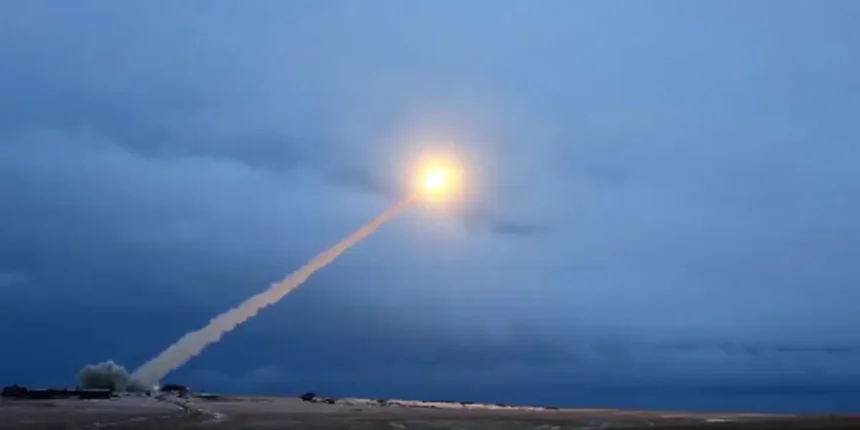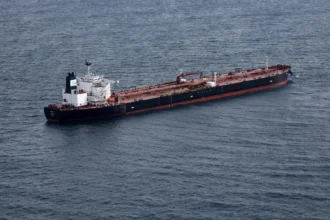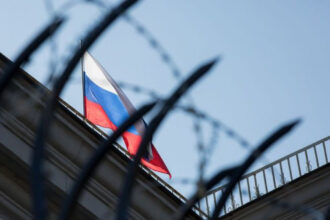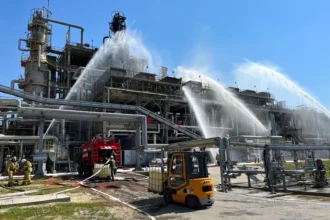Recent intelligence and satellite imagery indicate that Russia is preparing for a new test of its nuclear-powered Burevestnik cruise missile, highlighting Moscow’s ongoing efforts to advance its strategic weapons arsenal. The missile, officially dubbed 9M730 Burevestnik, is designed to fly at long ranges using a nuclear propulsion system, giving it theoretically unlimited range and the ability to evade traditional missile defenses.
Although previous tests have been plagued by failures, Russian officials suggest that the system is approaching operational readiness. The upcoming test, likely to occur in the Arctic region, underscores both the technological ambition and geopolitical signaling behind Russia’s weapons programs.
The Burevestnik Program
Burevestnik represents a next-generation strategic weapon in Russia’s nuclear triad. Unlike conventional missiles powered by chemical propellants, Burevestnik is designed with a nuclear-powered engine that allows it to:
- Travel intercontinental distances without refueling.
- Potentially change flight trajectories mid-course, complicating interception.
- Carry a nuclear payload capable of striking distant targets.
However, the program has faced numerous setbacks:
- Engine failures and crashes during early test flights.
- Safety concerns, including radiation leaks from prototype launches.
- International scrutiny, as the development of nuclear-powered cruise missiles violates the spirit of various arms control agreements.
Despite these hurdles, Russian military officials claim the missile is nearing operational capability, a claim that analysts remain skeptical of.
Arctic Preparations Signal Imminent Test
Satellite imagery over the Northern Fleet’s Arctic bases shows increased activity consistent with a missile launch, including:
- Movement of mobile launchers and support vehicles.
- Construction of specialized infrastructure to support long-duration test flights.
- Heightened security and restricted airspace notifications.
The Arctic is strategically important for Russia, providing remote and controlled areas for testing while also projecting Moscow’s military reach in a region increasingly contested by NATO and other powers.
Strategic Implications
If successfully tested, the Burevestnik missile would represent a significant shift in global strategic balance. Analysts highlight several implications:
- Nuclear Deterrence
The missile enhances Russia’s ability to threaten targets at long range with minimal warning, reinforcing its nuclear deterrent posture. - Missile Defense Evasion
Burevestnik’s potential for low-altitude, unpredictable flight paths could bypass existing missile defense systems, challenging U.S. and NATO capabilities. - Arms Control Concerns
The development raises questions about compliance with treaties such as the Intermediate-Range Nuclear Forces (INF) Treaty, which although defunct, had previously limited missile deployments. - Regional Signaling
Conducting a test in the Arctic signals Moscow’s strategic reach and technological ambitions to both domestic audiences and foreign adversaries, particularly as tensions with NATO and the U.S. remain high.
Risks and Challenges
Despite Moscow’s ambitious claims, significant technical and operational hurdles remain:
- Propulsion reliability: Nuclear engines are complex, and past tests have ended in accidents, including radiation contamination.
- Environmental hazards: Accidents in the Arctic could have severe ecological consequences.
- Geopolitical backlash: Testing a nuclear-powered missile could provoke sanctions, increased NATO vigilance, and arms race dynamics.
Analysts caution that while Burevestnik remains a headline-grabbing weapon, it is not yet a proven operational system, and its deployment will require years of refinement.
Global Reactions
Western governments are monitoring Russia’s Arctic activities closely. U.S. and European defense officials have emphasized:
- Early warning and monitoring: Intelligence satellites and Arctic patrols are tracking potential launches.
- Strategic dialogue: While formal arms control frameworks have weakened, NATO remains focused on deterrence and preparedness.
- Crisis management: Any test involving nuclear propulsion carries risk of misinterpretation or escalation, making communication channels crucial.
Conclusion
Russia’s preparations for a new Burevestnik test illustrate the intersection of technological ambition, strategic signaling, and geopolitical risk. While the missile could provide Moscow with unprecedented capabilities, it also carries significant technical, environmental, and political hazards.
For global observers, the test serves as a stark reminder that the nuclear arms landscape continues to evolve, even as the world grapples with conventional conflicts and emerging security threats. Whether Burevestnik becomes a reliable component of Russia’s arsenal or remains a high-risk experiment will have far-reaching implications for strategic stability and Arctic security.














